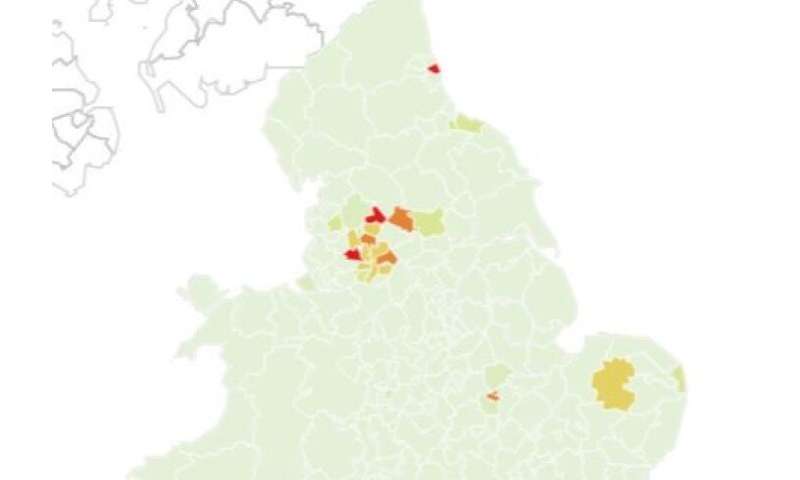
A new website uses reported cases and deaths to estimate the probability regions in England and Wales will become COVID-19 “hotspots.”
The team behind the website, from Imperial College London, define a hotspot as a local authority where there are more than 50 cases of COVID-19 per 100,000 of the population per week.
Using data on daily reported cases and weekly reported deaths and mathematical modeling, the team report the probability (%) that a local authority will become a hotspot in the following week.
The site also provides estimates for each local authority in England and Wales on whether cases are likely to be increasing or decreasing in the following week and the probability of R(t) being greater than 1 in the following week.
The reproduction number R(t) indicates the number of people each infected person will pass the virus onto. An R(t) larger than 1 indicates the outbreak is not under control and cases will continue to increase.
Current hotspots
The site will be updated daily. Currently, highlighted hotspots include Pendle, Bolton, Corby and Oldham with more than 50 reported cases per 100,000 population in the past week. However, the recently reported case numbers for Oldham show a decline. As a result, the model shows it is unlikely Oldham will remain a hotspot and the probability of it having an R(t) over 1 is low at 12%.
In comparison, recently reported case numbers for Bolton and Corby have increased, leading the model to show a high probability of these areas remaining hotspots in the next couple of weeks. The probability of R(t) being over 1 in these local authorities is 98% and 94% respectively.
The website was produced by the Department of Mathematics in collaboration with the WHO Collaborating Center for Infectious Disease Modeling within the MRC Center for Global Infectious Disease Analysis (GIDA), and Abdul Latif Jameel Institute for Disease and Emergency Analytics (J-IDEA) at Imperial.
Lead researcher Professor Axel Gandy, from the Department of Mathematics at Imperial, said: “The model allows us to project where local hotspots of COVID-19 are likely to develop in England and Wales based on the trends that we’re seeing in those areas. COVID-19 is, unfortunately, very much still with us, but we hope this will be a useful tool for local and national governments trying to bring hotspots under control.”
Enabling swift action
The predictions assume no change in current interventions (lockdowns, school closures, and others) in a local authority beyond those already taken about a week before the end of observations. Each local authority is also treated independently of its neighbors in the modeling, i.e. the epidemic in one local authority does not affect or is not affected by the situation in any adjacent a local authority.
The team also note that an increase in cases in a local authority can be due to an increase in testing, which the model does not currently account for. The model also assumes all individuals within each local authority are equally likely to be infected, so demographic factors such as the age structure of the population are not considered.
Source: Read Full Article
